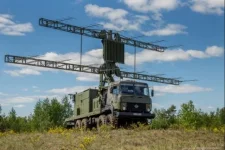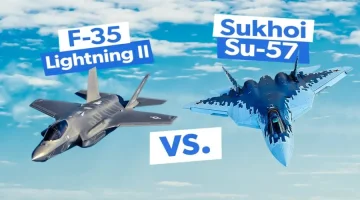- Views: 3K
- Replies: 7
The recent unveiling of China's J-35A stealth fighter at the Zhuhai Airshow has ignited a fierce debate, with comparisons to the US F-35A dominating discussions among defence enthusiasts and nationalists worldwide.
The side-by-side comparisons of these fifth-generation fighters, both designed for stealth, agility, and multirole capabilities, have flooded social media, sparking controversy, humor, and intense debate.
Many Chinese netizens have praised the J-35A's sleek design, with some claiming it surpasses the F-35A in aesthetics.
"I didn't think the F-35 was so ugly before, but now it's really ugly. The J-35 is currently the best-looking stealth fighter in the world," one user commented, reflecting a common sentiment online.
Others have drawn comparisons to a "stealthier MiG-29," acknowledging a visual similarity to the Russian jet while emphasizing the aircraft's distinct Chinese engineering.
However, American commentators have responded with skepticism and humor, with some dubbing the J-35A the "Temu F-35," referencing a Chinese e-commerce platform known for selling copycat goods.
This nickname highlights concerns about China's defence designs, with critics arguing that the J-35A borrows heavily from the F-35A's blueprint.
Some even suggest that the similarities extend beyond aesthetics, implying that China might be attempting to replicate the F-35A's success through its design and "J-35" designation.
The naming convention itself has fueled speculation, with some believing that the "J-35A" designation is a deliberate attempt to position the aircraft as a direct rival to the F-35A.
This seemingly intentional mirroring is interpreted as an assertion of parity with the US, implying that the J-35A is an aircraft of comparable caliber and stature in the global defence arena.
Despite the visual similarities, the J-35A and F-35A have distinct design features and intended functionalities. Chinese commentators have been quick to point out that similarities in stealth aircraft design are inevitable due to the underlying physics of stealth technology. They maintain that the J-35A, while visually similar to the F-35A, boasts unique engineering and capabilities.
The J-35A is powered by indigenous Chinese engines, which are not yet considered to be on par with the F-35A's Pratt & Whitney F135 engine in terms of performance.
Furthermore, the F-35A is believed to possess more advanced stealth coatings and a lower radar cross-section, thanks to decades of US research in radar-absorbing materials.
The two aircraft also differ in their avionics and sensor capabilities. The F-35A boasts a highly integrated avionics suite, including the Distributed Aperture System (DAS) and Electro-Optical Targeting System (EOTS), which provide unparalleled situational awareness and data-sharing capabilities.
While the J-35A features modern avionics, it remains to be seen whether it can match the F-35A's level of sensor fusion and network-centric warfare capabilities.
The online debate surrounding the J-35A and F-35A highlights the complex relationship between technological advancement, national pride, and international competition in the realm of military aviation.
While some see the J-35A as a symbol of China's growing aerospace prowess, others remain skeptical of its capabilities and originality. Ultimately, the true measure of the J-35A's success will lie in its performance in real-world operational scenarios.



